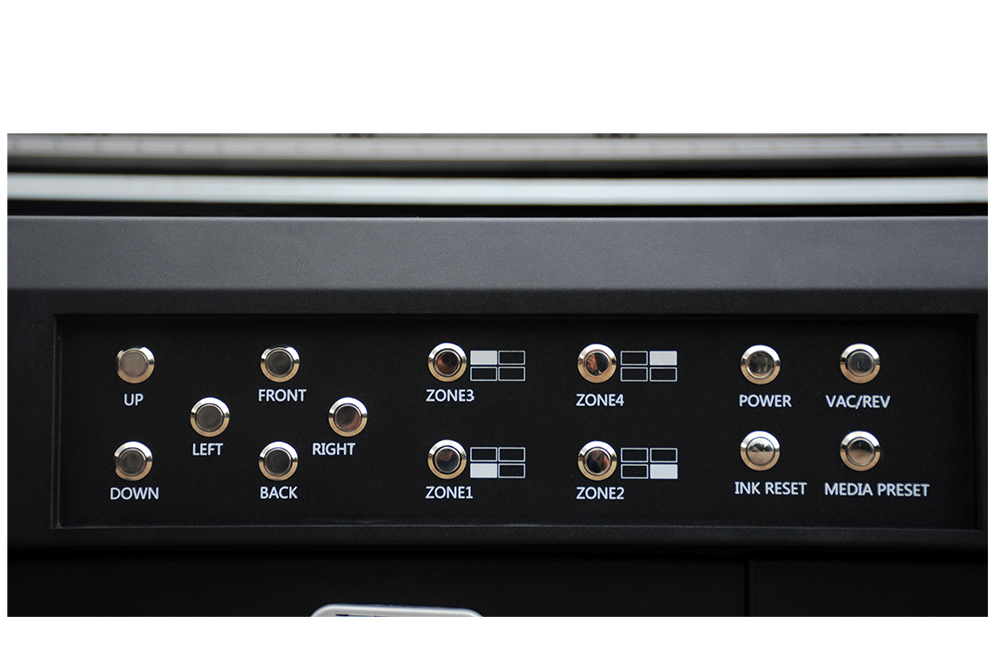UV Flatbed Printer: A Guide to Selecting the Right Media for Your Application
In the realm of digital printing, UV flatbed printers have emerged as versatile and powerful tools, capable of producing stunning graphics on a wide array of substrates. Whether you’re in the business of signage, decorative arts, or industrial manufacturing, a UV flatbed printer can significantly enhance your production capabilities. However, the success of your print projects hinges not just on the printer itself, but also on the choice of media. Selecting the right media for your UV flatbed printer can be the difference between a mediocre output and a masterpiece. This guide aims to demystify the process, providing you with the knowledge to make informed decisions that will elevate your printing endeavors.

Understanding UV Flatbed Printers
Before diving into media selection, it’s essential to have a basic understanding of how UV flatbed printers work. These printers utilize ultraviolet (UV) light to cure inks almost instantly as they are deposited onto the substrate. This process allows for printing on a variety of materials without the need for pre-treatment or lengthy drying times. The result is a durable, scratch-resistant, and weather-proof finish that can withstand the test of time.
UV flatbed printers are known for their ability to print on materials of varying thicknesses and textures, from rigid substrates like glass, metal, and wood to flexible materials such as fabrics and vinyl. This versatility makes them ideal for a multitude of applications, including:
Indoor and outdoor signage
Decorative panels and furniture
Promotional items
Packaging prototypes
Artistic reproductions
Factors to Consider When Selecting Media
Choosing the right media for your UV flatbed printer involves considering several factors that can impact the quality, durability, and overall success of your prints. Here are the key aspects to keep in mind:
Material Compatibility
Not all materials are created equal when it comes to UV printing. Some may absorb ink differently, causing colors to appear dull or uneven. Others may not adhere well to the UV-cured ink, leading to peeling or flaking over time. It’s crucial to consult your printer’s manufacturer guidelines for a list of recommended and tested materials.
Surface Texture and Porosity
The surface texture and porosity of the media can significantly affect ink absorption and adhesion. Smooth, non-porous surfaces like glass or metal provide a consistent base for even ink distribution, while porous materials like wood or uncoated paper may require special handling to ensure proper ink penetration and drying.
Thickness and Rigidity
The thickness and rigidity of the media determine how it will pass through the printer and how it will hold up during the printing process. Thicker or more rigid materials may require adjustments to the printer’s bed or support structures to ensure proper printing and curing.
Intended Use and Environment
Consider where and how the printed item will be used. Outdoor applications, for example, demand media that can withstand UV exposure, moisture, and temperature fluctuations. Indoor applications may prioritize aesthetic appeal over durability.
Cost and Availability
Budget constraints and material availability can also play a role in media selection. While some specialty materials may offer unique visual effects or superior performance, they may come at a higher cost or be harder to source.
Common Media Types for UV Flatbed Printing
With the above factors in mind, let’s explore some of the most common media types used in UV flatbed printing:
Rigid Substrates
Acrylic: Known for its transparency and durability, acrylic is a popular choice for high-end signage and display applications.
Metal: Aluminum, steel, and other metals can be printed on to create industrial signs, decorative panels, and even art pieces.
Wood and MDF: These natural materials add warmth and texture to prints, making them ideal for furniture, decorative items, and interior design elements.
Glass: From storefront windows to art installations, glass provides a sleek, modern look that can be enhanced with UV-printed graphics.
Flexible Media
Vinyl: Available in a variety of finishes, vinyl is versatile and cost-effective, making it a go-to for banners, wraps, and temporary signage.
Fabrics: Polyester, canvas, and other fabrics can be printed on to create custom textiles for flags, awnings, and interior decor.
Paper and Cardstock: While less common in UV flatbed printing due to the need for specialty inks, certain types of paper and cardstock can be used for artistic prints, packaging prototypes, and more.
Specialty Materials
Ceramics and Tiles: UV printing on ceramics and tiles allows for the creation of unique, customized decorative elements for homes and commercial spaces.
Leather and Faux Leather: These materials can be printed on to produce personalized accessories, furniture upholstery, and automotive interiors.
Plastics: Beyond acrylic, other plastics like PVC, polycarbonate, and ABS can be printed on for a range of applications, from industrial parts to consumer products.
Testing and Proofing
Before committing to a large-scale print job, it’s advisable to conduct tests and proofing on the selected media. This process involves printing small samples to assess ink adhesion, color accuracy, and overall print quality. Testing can also help identify any potential issues, such as ink bleeding, smudging, or poor curing, which can then be addressed by adjusting printer settings or choosing a different media type.
Selecting the right media for your UV flatbed printer is a critical step in ensuring the success of your printing projects. By considering material compatibility, surface texture, thickness, intended use, and cost, you can make informed decisions that will result in high-quality, durable prints. Remember to consult your printer’s manufacturer guidelines, conduct thorough testing, and stay open to exploring new and innovative materials that can push the boundaries of what’s possible with UV flatbed printing.
As technology continues to advance, the range of media options for UV flatbed printers will only continue to grow. By staying informed and adaptable, you can leverage these advancements to create stunning, impactful prints that meet the needs of your clients and stand the test of time.
